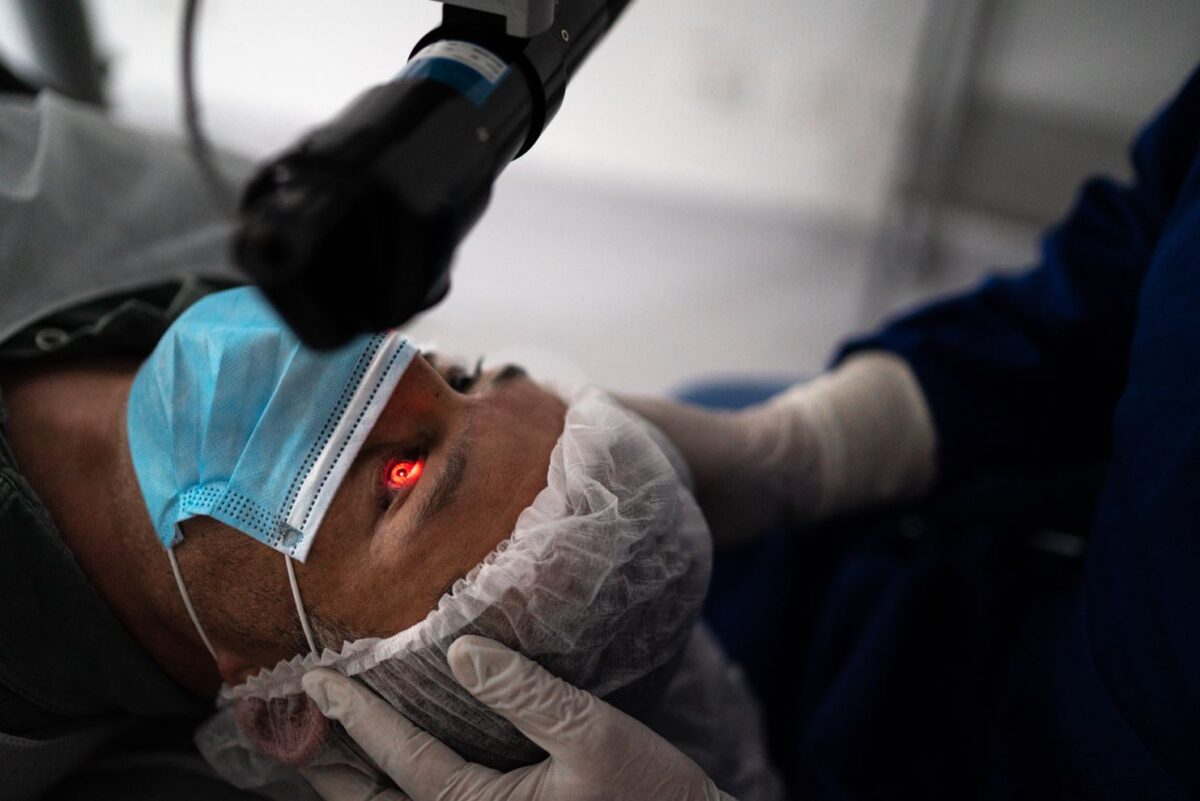Recovery After Cataract Surgery

Cataract surgery is a procedure which replaces the eye’s cloudy lens with a clear, artificial lens. Performed by an ophthalmologist on an outpatient basis, it is common and safe. Cataract surgery requires only a few specific recovery guidelines 1.
Immediately after surgery, the eye may feel gritty, scratchy, watery, or simply uncomfortable. Vision may be blurred or doubled. They eye may also be red or bloodshot 2. While feeling should begin to return within a few hours of surgery, it could take up to a few days for vision to fully return. Patients are typically allowed to go home on the same day as the surgery.
Patients might be sent home directly with a patch or clear shield on their eye to prevent them from rubbing it. The eye shield needs to stay on for at least a week. They may also receive eyedrops to help the eye heal 3. These should be used meticulously as instructed. Although the screen may look a bit blurry, patients are allowed to watch TV right away.
In the first few weeks following cataract surgery, there are a number of important recovery guidelines to follow. Patients need to relax and lay low for the first 2 to 3 days, limiting strenuous activity during the full recovery period. For several weeks, patients should avoid rigorous exercise that require heavy lifting and could increase eye pressure. Patients can bathe or shower as usual, wearing an eye shield when washing hair, but need to avoid swimming for 4 to 6 weeks 4. Finally, patients need to wait for their ophthalmologist’s permission to start driving again.
Painkillers can be administered as need be, but patients should immediately contact their eye surgeon in response to increased pain/redness or decreased vision.
Cataract surgery successfully restores vision in the majority of individuals. Following proper recovery guidelines should ensure a swift return to normal activities after cataract surgery. While it could take up to 3 to 10 weeks to reach the maximum level of clarity, most people see well again about 1 to 3 days following the surgery.
After their eye heals, a patient may still need to wear glasses, especially for reading. Their ophthalmologist will inform them when their eye is sufficiently healed to obtain a final prescription for their glasses. This is usually 1 to 3 months postoperatively 1.
Occasionally, patients may develop a secondary cataract after their first cataract surgery. This happens when the back of the lens capsule clouds up and impairs their vision. It is treated with a painless, rapid outpatient procedure. While rare, other complications may include increased eye pressure and retinal detachment 1.
It is critical for a cataract surgery patient to follow their doctor’s orders and adhere to proper timelines for resuming normal daily activities. While carefully following these guidelines, recovery from cataract surgery is usually smooth and swift.
References
1. Cataract surgery – Mayo Clinic. Available at: https://www.mayoclinic.org/tests-procedures/cataract-surgery/about/pac-20384765. (Accessed: 21st November 2022)
2. Cataract surgery – Recovery – NHS. Available at: https://www.nhs.uk/conditions/cataract-surgery/recovery/. (Accessed: 21st November 2022)
3. Cataract Surgery: What to Expect at Home. Available at: https://myhealth.alberta.ca/Health/aftercareinformation/pages/conditions.aspx?hwid=zy1459. (Accessed: 21st November 2022)
4. Cataract Surgery Recovery: 5 Tips From an Expert | Johns Hopkins Medicine. Available at: https://www.hopkinsmedicine.org/health/wellness-and-prevention/cataract-surgery-recovery-5-tips-from-an-expert. (Accessed: 21st November 2022)
